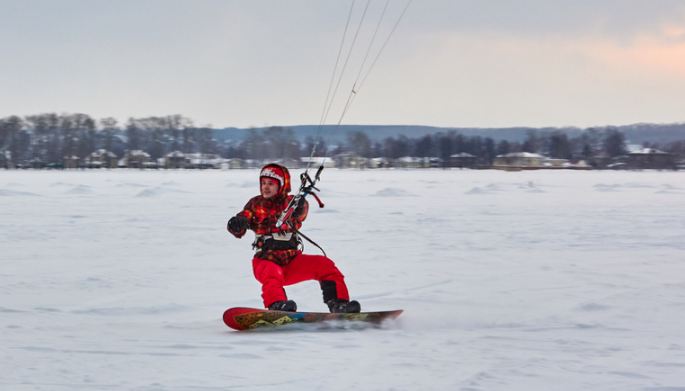Are you a newcomer in the world of water-skiing? Then you must remember that this is not an easy game to try.
There are lots of hazards involved in doing water skiing. This is a guide for all those newcomers in the arena of this adventure sport so that you can enjoy smooth water skiing experience.
a) The first and foremost thing is you must always remember to keep your knees bent.
It should be kept close to your chest and pushed together. Your ski tips should be kept up, and the rope out in front of you.
Always keep your arms straight and passing around the outside of your knees thus keeping them together. The skis are approximately 9 inches apart with tips 9 inches above the water.
Always grip the handle with the rope placed between the skis. Giving the driver the thumbs up means you’re ready to go and he will begin to pull you up out of the water. Try to stand up while
keeping your arms locked and straight out in front of you, while keeping your knees in the bent position.
If you keep this position, you will have no trouble staying in control. Beginners should always stay behind the wake of the boat, where the water is smooth.
It is only after you have reached a more advanced level, you will be able to acquire the skills needed for going outside the wake and perform a variety of jumps, turns, and other tricks.
b) Even if you are an expert swimmer then also it is always advised that you should wear a personal floatation device.
Even if you fall, which happens most often in the case of a new skier, remember, you must clasp your hands above your head so that the driver knows that your are not hurt.
c) You must always have an observer in the boat, this is necessary because it is not possible for the boat driver to watch the skier and operate the boat safely at the same time.
d) There is no need to ski in rough water. High waves or a rough sea will prevent the towboat from maintaining a steady course and speed.
If you are skiing in cooler weather, be cautious about hypothermia problems. It can lead to a reduction in coordination and judgment.
e) It is better that you stay away from congested areas and obstructions. Water-skiing should always be done in an open area.
f) It is not right to spray or “buzz” swimmers, boats, or other skiers. This can be dangerous because this can lead to an unintentional collision.
g) Keep the adventurer under control and never try skiing after dark. It is simply illegal and dangerous.
h) Avoid having alcohol or any drugs before going for water skiing. This is extremely dangerous because of the impairment to your judgment and ability to respond.
i) Use hand signals between the skier and observer. Check what each signal means beforehand so that there is no confusion at a critical moment.
j) Remember, for safe skiing, a minimum depth of five to six feet of obstacle-free water is suggested. This is to keep the skis from dragging bottom during starts.
k) While landing, try and avoid solid objects. Many skiers suffer serious injuries when they attempt to stop near docks or pilings.
It is always better for the beginners to ski only in areas you are familiar with.
Before going for skiing, consult charts of the area, ask other skiers who have local knowledge and personally drive through the course before you actually ski it.
Remember all these tips when you venture out in the world of water skiing for the first time so that you can fully enjoy this fun game.

